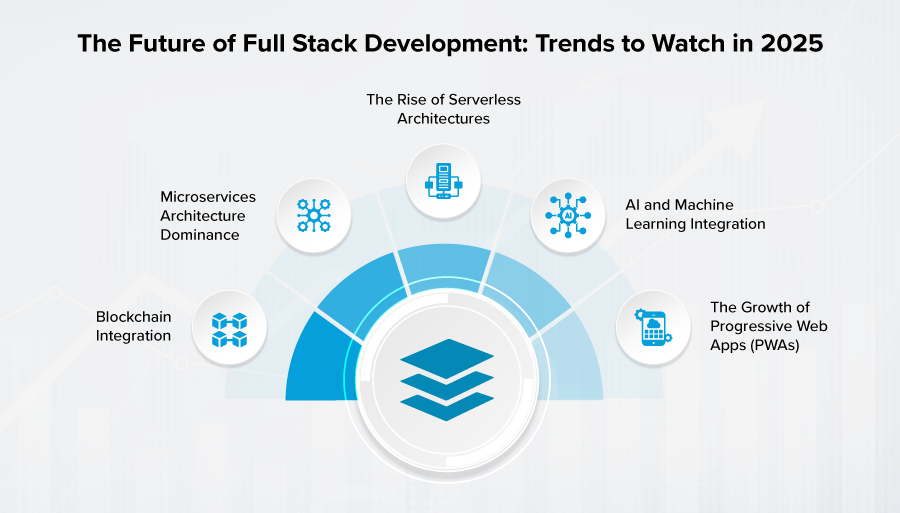The Future of Full Stack Development: Trends to Watch in 2025
Full Stack Development is evolving rapidly, keeping pace with the technological advancements shaping the future of web and software development. By 2025, several key trends are expected to redefine how full stack developers approach their craft, making it essential for them to stay ahead of the curve.
Let's explore some of these transformative trends.

- The Rise of Serverless Architectures: Serverless architecture is on track to become a significant game-changer. This technology enables developers to build and deploy applications without worrying about the underlying infrastructure, allowing them to focus on code rather than server management. Platforms like AWS Lambda and Google Cloud Functions are pioneering this shift, making applications more scalable and cost-effective. As serverless adoption grows, full stack developers will need to master this architecture to stay relevant and improve their development efficiency.
- AI and Machine Learning Integration: The integration of Artificial Intelligence (AI) and Machine Learning (ML) into web applications is becoming the norm. By 2025, full stack developers will increasingly be expected to incorporate AI-driven features like chatbots, recommendation engines, and predictive analytics into their applications. This shift will require developers to expand their skillsets, including learning AI frameworks and understanding data processing to build smarter, more adaptable applications.
- The Growth of Progressive Web Apps (PWAs): Progressive Web Apps (PWAs) are reshaping how developers approach the web. PWAs combine the accessibility of web apps with the performance and user experience of native mobile apps, offering features like offline functionality, push notifications, and fast loading times. As businesses seek more seamless, responsive, and engaging applications, full stack developers will need to prioritize PWA development to provide users with the best of both worlds—web and mobile.
- Microservices Architecture Dominance: The transition from monolithic applications to microservices architecture is accelerating. Microservices allow for modular, scalable applications that are easier to develop, maintain, and upgrade. Full stack developers will need to become proficient in API development, containerization, and distributed systems to succeed in a world where microservices architecture dominates. Understanding how to manage and integrate various microservices effectively will be crucial for building large, complex applications that can scale efficiently.
- Blockchain Integration: Blockchain technology is no longer just the domain of cryptocurrencies; its potential in enhancing security, transparency, and decentralization is vast. By 2025, blockchain may play a significant role in areas like supply chain management, secure transactions, and decentralized applications (dApps). Full stack developers who explore blockchain integration can help build applications with higher levels of security and trust. This technology presents unique opportunities for developers willing to innovate within this space.
Summing Up
The future of full stack development is bright and full of opportunities. As these trends continue to evolve, full stack developers must remain adaptable and committed to continuous learning.
By staying ahead of these trends, full stack developers can shape the future of web development, delivering smarter, faster, and more secure applications that will define the next era of technology.
As the landscape of Full Stack Development evolves, now is the perfect time to level up your skills and stay ahead of the curve.
If you’re eager to dive deeper into these trends and learn how to build cutting-edge applications, don’t miss our on-demand webinar on Full Stack Development at SkillStone. Discover expert insights, hands-on tips, and best practices from industry professionals who are shaping the future of development.
Click here to access the webinar and start your journey toward mastering Full Stack Development today!
Previous post




